Aranguren – Orejo
CHARACTERISTICS
- Estación de Aranguren (UTM 30T 491108 4784181); (P.K. 23,529) / VM
- Estación de Mimétiz (UTM 30T 489361 4784773); (P.K. 25,500) / VM
- Estación de Traslaviña (UTM 30T 483914 4786726); (P.K. 32,385) / VM
- Estación de Arcentales (UTM 30T 482671 4786996); (P.K. 34,046) / VM
- Estación de Villaverde Trucios (UTM 30T 479653 4787638); (P.K. 38,299) / VM
- Estación de Carranza (UTM 30T 470940 4787415); (P.K. 49,476) / VM
- Estación de Gibaja (UTM 30T 464444 4792235); (P.K. 58,508) / VM
- Estación de Udalla (UTM 30T 463849 4795728); (P.K. 62,985) / VM
- Estación de Marrón (UTM 30T 465878 4799362); (P.K. 67,903) / VM
- Estación de Limpias (UTM 30T 464891 4800756); (P.K. 71,000) / VM
- Estación de Treto (UTM 30T 461982 4804695); (P.K. 75,847) / VM
- Estación de Cicero (UTM 30T 460298 4807249); (P.K. 80,000) / VM
- Estación de Gama (UTM 30T 457524 4807943); (P.K. 83,000) / VM
- Estación de Beranga (UTM 30T 453281 4806928); (P.K. 86,935) / VM
- Estación de Hoz de Anero (UTM 30T 445992 4805996); (P.K. 94,980) / VM
- Estación de Villaverde de Pontones (UTM 30T 443031 4806741); (P.K. 98,091) / VM
- Estación de Puente Agüero (UTM 30T 441801 4806228); (P.K. 99,400) / VM
- Estación de Orejo (UTM 30T 440091 4805481); (P.K. 101,400) / VM
The section between Aranguren and Orejo constitutes the central part of the 780 Bilbao-La Concordia-Santander railway line. The two ends of the line currently belong to the suburban network, specifically, the Bilbao-La Concordia-Aranguren section to the Bilbao suburban nucleus and the Orejo-Santander section to the Santander suburban nucleus.
The Bilbao-Santander line dates back to the end of the 19th century. This railway line was not included in the 1867 General Railway Plan due to the low population density of the region, the limited industrial activity at that time, prior to the iron mining boom, and the existence of coastal shipping. It was therefore not possible to count on the financial support of the State for its construction. [1]
However, at the end of the Third Carlist War in 1876, the iron mining industry in Biscay experienced a notable advance, driven by high international demand, which allowed for the development of industry and commerce in the region. Similarly, but on a smaller scale, Santander also witnessed a similar phenomenon at the end of the 19th century. As a consequence of the industrial and therefore economic boom in the region, different projects for the construction of railway lines were proposed. One of the first to be completed was the Iberian gauge line (1.668 m) between Sestao and Ortuella, which connected the docks of the Nervión with the mines of Triano and was inaugurated in 1865 and extended as far as Muskiz, on the border with Cantabria, in 1890. In 1888, this line connected with the railway from Bilbao to Portugalete, which seemed to be the beginning of an Iberian gauge railway along the coast towards Cantabria.
[...] at the end of the Third Carlist War in 1876, the iron mining industry in Biscay experienced a notable advance [...]
In that same period, the broad gauge railway line between Santander and Solares was inaugurated, and was later extended from Orejo to Santoña, with a branch line to Colindres, maintaining the Iberian standard gauge. Meanwhile, at the other end, in Biscay, in July 1894, the concession was granted for the construction of a railway, with the option of a narrow or broad gauge, between Muskiz and Castro Urdiales. It can therefore be said that at the beginning of the last decade of the 19th century, the broad gauge railway connection between Santander and Bilbao along the coast seemed close to materialising, with a single 20-kilometre section between Colindres and Castro Urdiales still to be defined.
At the beginning of that same decade, the only railway operating in the region between Santander and Bilbao was the Cadagua Railway, which had been inaugurated in December 1890, connecting the Bilbao neighbourhood of Zorrotza with Balmaseda. The good results obtained in the operation of this line led its promoters to consider other initiatives, including the construction of a railway to Santander.
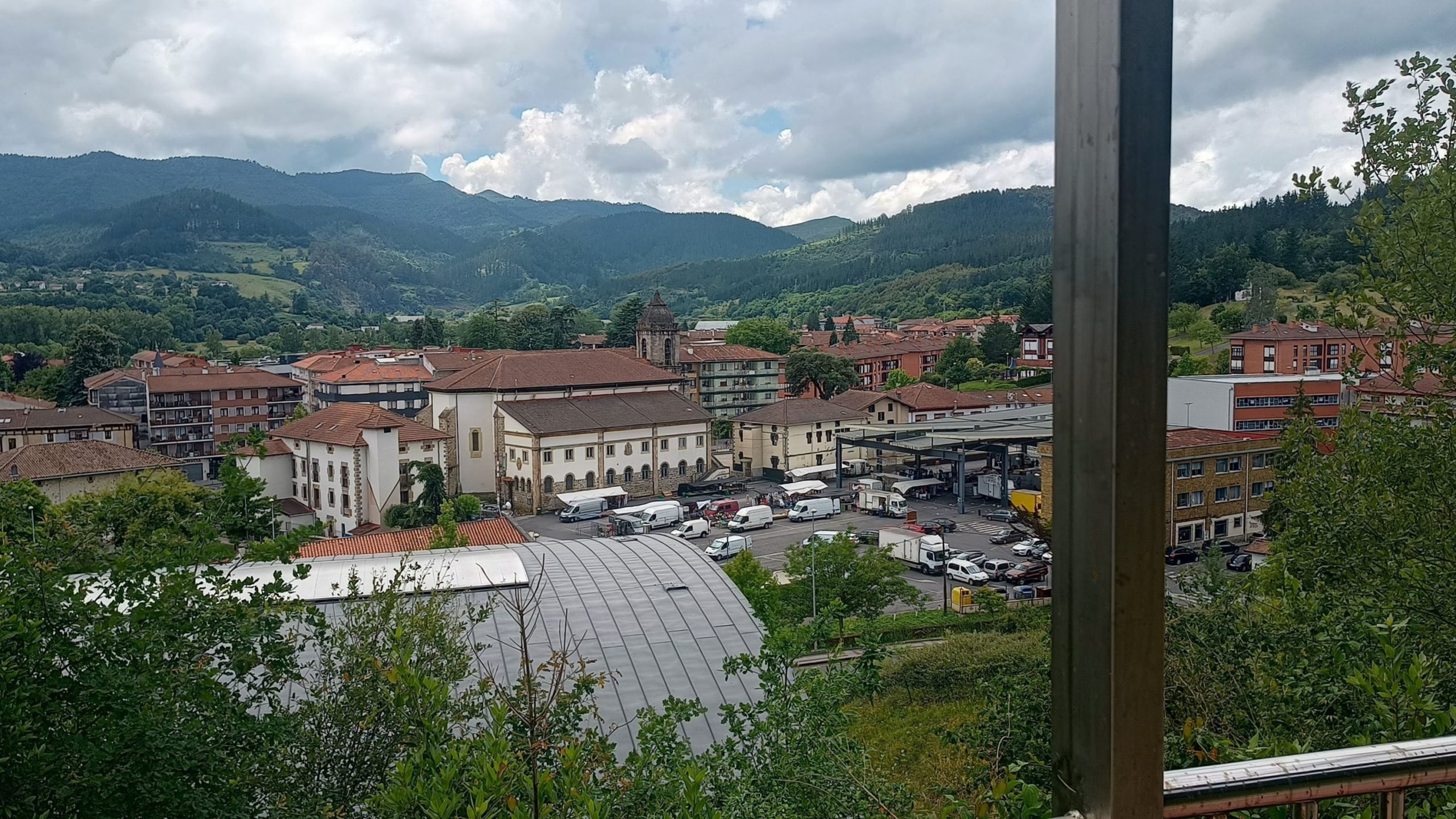
Apeadero de Mimetitz (Vizcaya)
Despite the interest in using the existing wide-gauge railway concessions, which could connect Santander and Bilbao along the coast, various obstacles slowed down the development of the project. These included the complicated orography, the heavy urbanisation of the territory and the conflict of interests with the Provincial Council of Biscay, which obtained significant income from the Triano railway [‘1’]. The possibility was then raised of building a railway line through the interior, taking advantage of the existing lines from Santander to Solares and from Zorrotza to Aranguren, the former a 17-kilometre wide-gauge line and the latter an 18-kilometre narrow-gauge line. To this end, in July 1894, the Santander to Bilbao Railway Company was founded, the result of the merger of the Santander to Solares railway company (Iberian gauge), the Cadagua Railway and the Zalla to Solares Railway (narrow gauge). This union marked the birth of the railway line that would finally connect Santander and Bilbao at the end of the 19th century. [2]
The possibility of building a railway line through the interior was then considered [...]
After the company was created, a debate arose about the track gauge to be used for the new line. Some technicians advocated for metric gauge, arguing about the difficulties of the mountainous terrain of northern Spain. Others defended Iberian gauge, pointing out that the line to the French border would be very useful for freight transport due to the flourishing industrial and mining development in the region. Finally, the chosen option was to build in metric gauge. As a result, in July 1896 the direct service between Santander and Bilbao was officially inaugurated, with a journey time of 4 hours and 10 minutes. [3] [4]
The Santander to Bilbao Railway Company monopolised mobility between Cantabria and Biscay during the first half of the 20th century, but, although the construction of the metric gauge line was a success from an operational point of view, with the passage of time the error of this choice became evident as it prevented the rail connection of Santander with the Mediterranean through Bilbao, thus isolating the Trans-Cantabrian railway line from the main railway networks of the rest of Spain.
[...] with the passage of time the error of this choice became evident as it prevented the railway connection from Santander to the Mediterranean through Bilbao [...]
In the 1920s, the company’s economic results began to deteriorate due to increasing competition from road transport. This situation worsened in the 1930s during the Civil War, causing a deterioration of the service. At the end of the war, with the temporary decrease in road competition due to the shortage of fuel and tyres, the railway line between Santander and Bilbao experienced some recovery. However, by the mid-1950s, competition by road had intensified again and the railway was once more operating at a loss.
Economic difficulties led the Santander to Bilbao Railway Company to relinquish the management of its concessions in August 1962, and it was taken over by EFE, the State Railway Operating Company. From then until now, the line has been publicly managed, first by EFE, then by the state-owned company FEVE from 1965, and since 2013, within the framework of the State’s grouping of the management and operation of national public railway infrastructures, by Renfe for the operation of the service and Adif for the infrastructure.
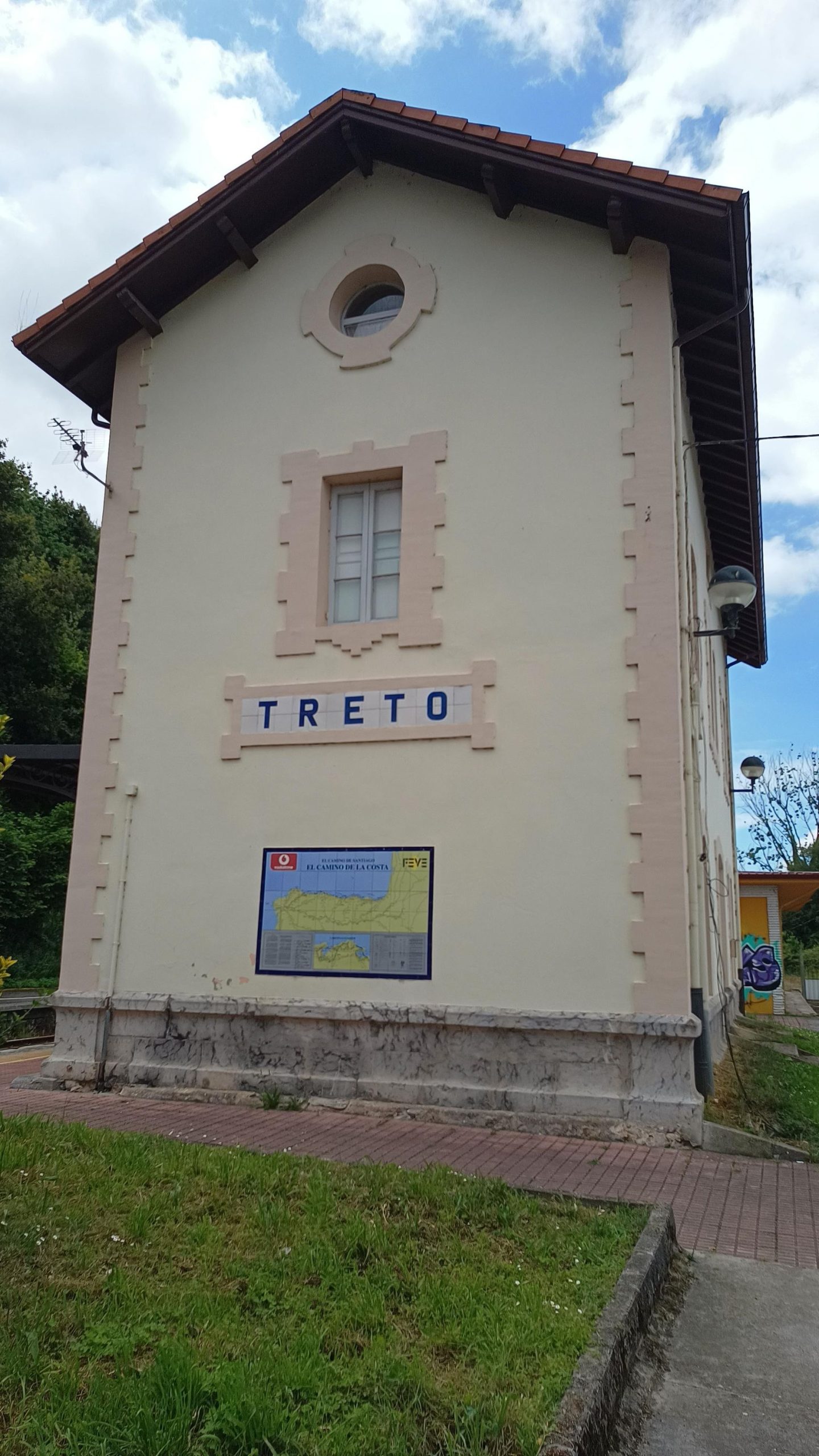
Estación de Treto (Cantabria)
The latest modernisation and improvement works that have affected the Aranguren – Orejo section have been the electrification between the Bilbao – Karrantza stations, in 2022, and the adaptation of slopes and trenches. [5]
In recent years, passenger and freight traffic has decreased significantly on the section between Aranguren and Orejo, as much of the freight transport has been diverted to the road, probably due to the low quality of the service offered and the low population density in the areas it crosses. In 2024 there will be four daily regional services in each direction linking Santander and Oviedo with stops on the Aranguren-Orejo section, sharing the route with freight trains.
In 2024 there will be four daily regional services in each direction linking Santander and Oviedo [...]
The line’s tourism potential is rated as medium or medium-high, especially considering the interest of certain towns that are located at the far ends and that currently belong to their neighbouring centres. The line crosses two types of landscape, firstly the descent from Las Encartaciones to the Treto estuary (Cantabrian coast near Laredo), a reasonably mountainous area. There is a little more demand in Karrantza, but in general the stations are in sparsely populated areas. From Treto to Orejo it also passes through small population centres far from the coast, with good views of the Cantabrian Mountains but too far away for activities.
Category C1.
Non-electrified track with wooden sleepers in need of repair.
Photographic Report
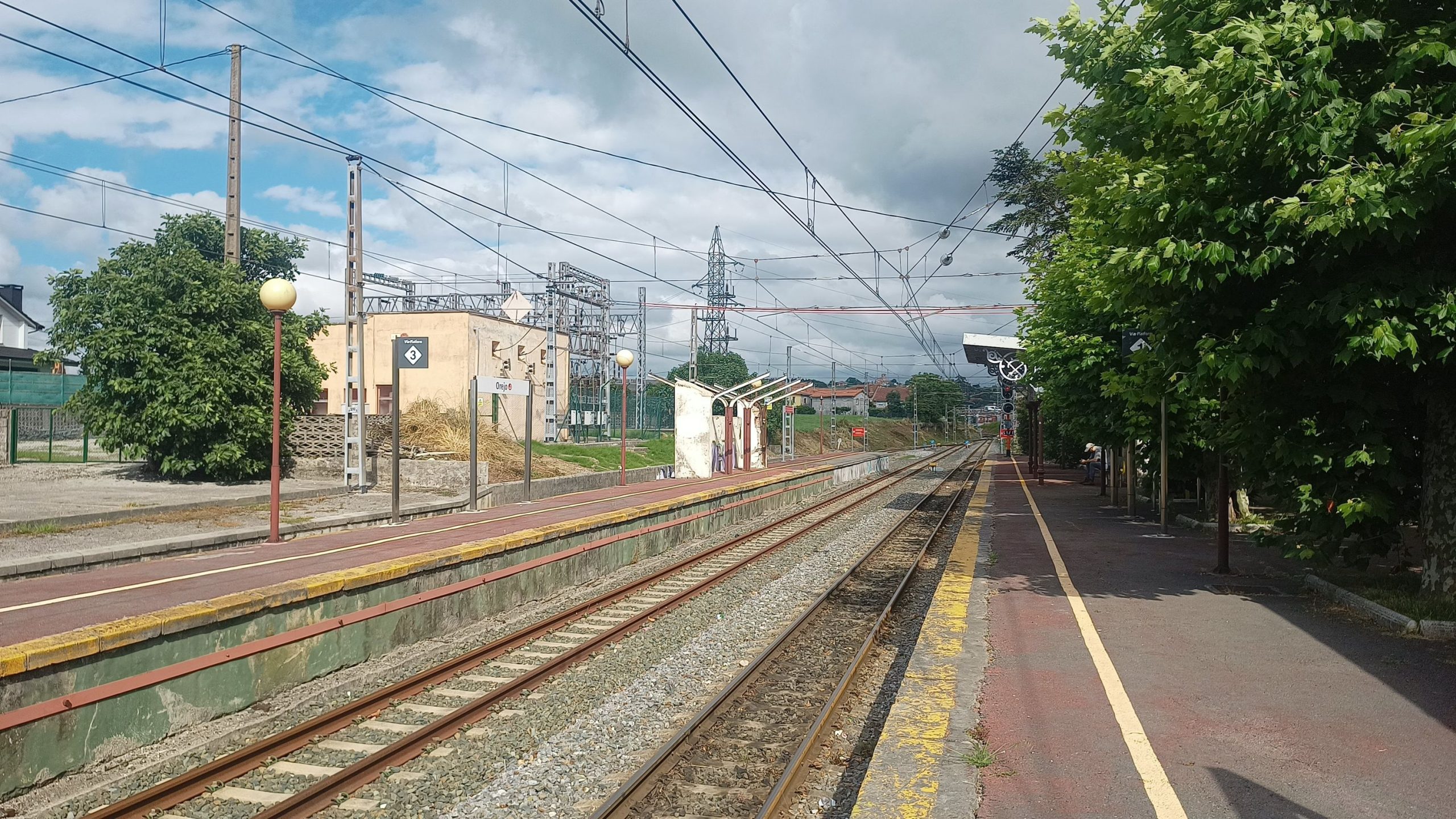
Estación de Orejo (Cantabria)
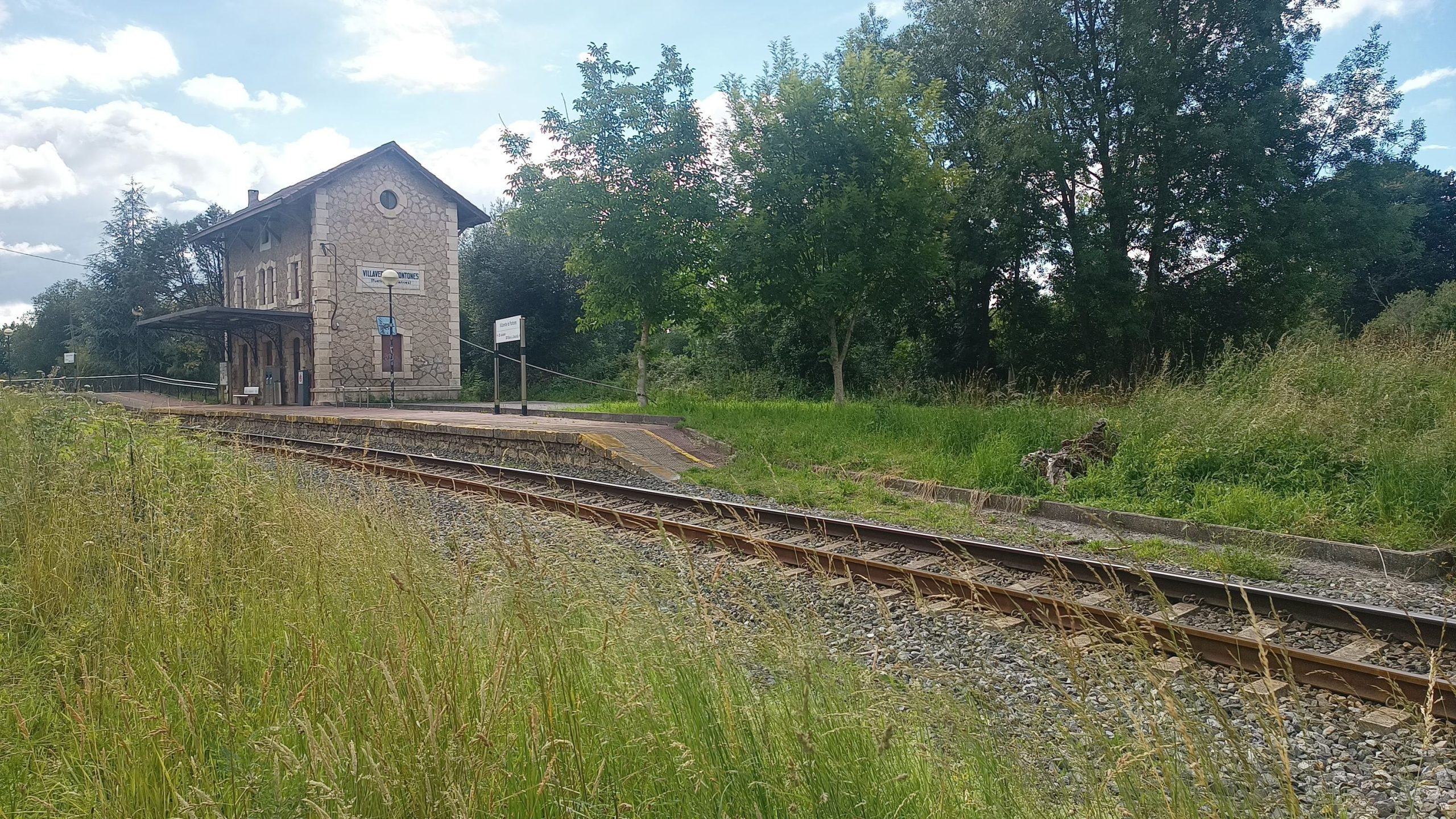
Apeadero de Villaverde de Pontones (Cantabria)
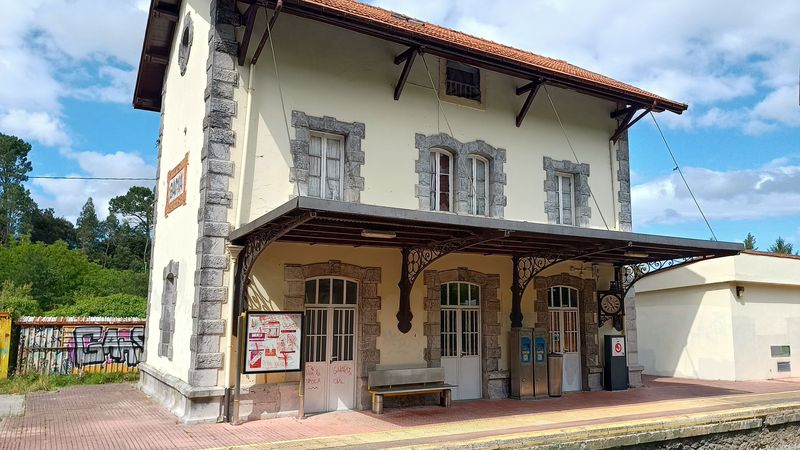
Estación de Gama (Cantabria)
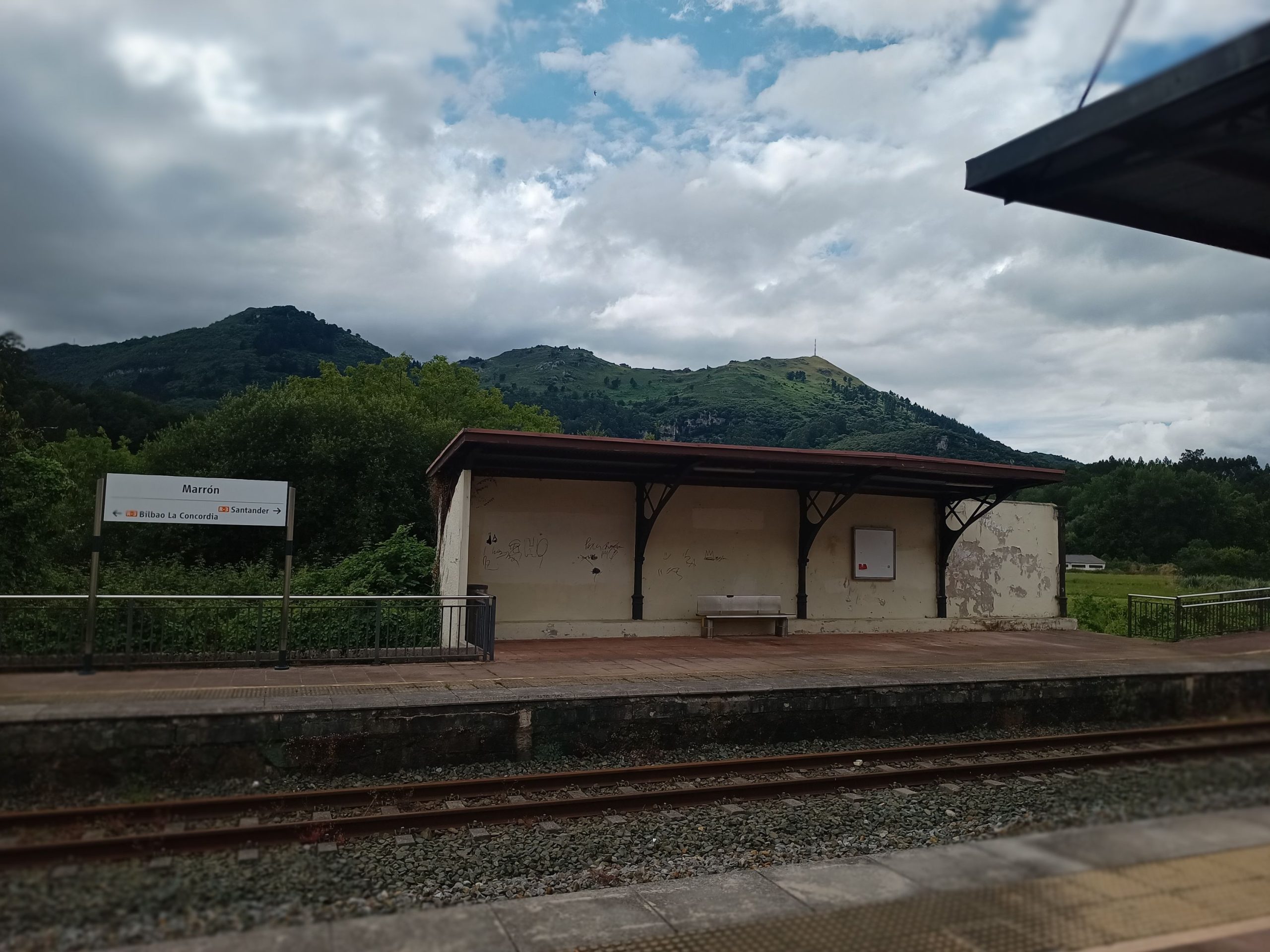
Estación de Marrón (Cantabria)
References
-
J. Olaizola, «Historias del tren. EL FERROCARRIL DE SANTANDER A BILBAO CUMPLE 125 AÑOS», Blogspot.com. [En línea]. Ver referencia
-
«Bilbaopedia - ferrocarril Santander-Bilbao», Bilbaopedia.info. [En línea]. Ver referencia
-
J. O. Elordi, «Breve Historia del ferrocarril en el Pais Vasco», Ferropedia. [En línea]. Ver referencia
-
J. M. Rivas, «Ferrocarril Santander-Bilbao, el camino de hierro al progreso», El Diario Montañés, 05-feb-2023. [En línea]. Ver referencia